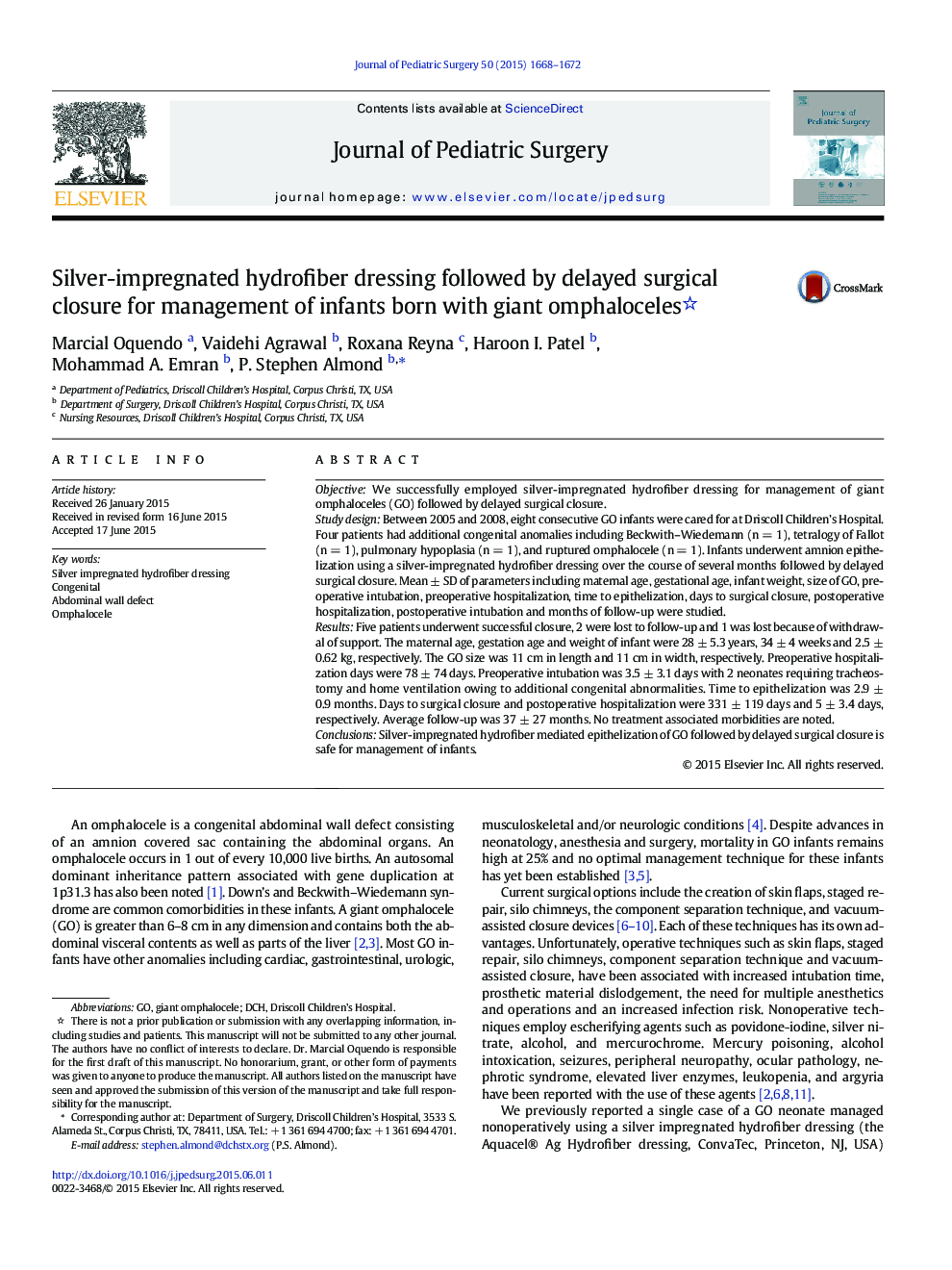| Article ID | Journal | Published Year | Pages | File Type |
|---|---|---|---|---|
| 4154996 | Journal of Pediatric Surgery | 2015 | 5 Pages |
ObjectiveWe successfully employed silver-impregnated hydrofiber dressing for management of giant omphaloceles (GO) followed by delayed surgical closure.Study designBetween 2005 and 2008, eight consecutive GO infants were cared for at Driscoll Children’s Hospital. Four patients had additional congenital anomalies including Beckwith–Wiedemann (n = 1), tetralogy of Fallot (n = 1), pulmonary hypoplasia (n = 1), and ruptured omphalocele (n = 1). Infants underwent amnion epithelization using a silver-impregnated hydrofiber dressing over the course of several months followed by delayed surgical closure. Mean ± SD of parameters including maternal age, gestational age, infant weight, size of GO, preoperative intubation, preoperative hospitalization, time to epithelization, days to surgical closure, postoperative hospitalization, postoperative intubation and months of follow-up were studied.ResultsFive patients underwent successful closure, 2 were lost to follow-up and 1 was lost because of withdrawal of support. The maternal age, gestation age and weight of infant were 28 ± 5.3 years, 34 ± 4 weeks and 2.5 ± 0.62 kg, respectively. The GO size was 11 cm in length and 11 cm in width, respectively. Preoperative hospitalization days were 78 ± 74 days. Preoperative intubation was 3.5 ± 3.1 days with 2 neonates requiring tracheostomy and home ventilation owing to additional congenital abnormalities. Time to epithelization was 2.9 ± 0.9 months. Days to surgical closure and postoperative hospitalization were 331 ± 119 days and 5 ± 3.4 days, respectively. Average follow-up was 37 ± 27 months. No treatment associated morbidities are noted.ConclusionsSilver-impregnated hydrofiber mediated epithelization of GO followed by delayed surgical closure is safe for management of infants.
